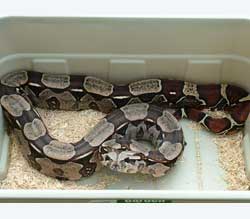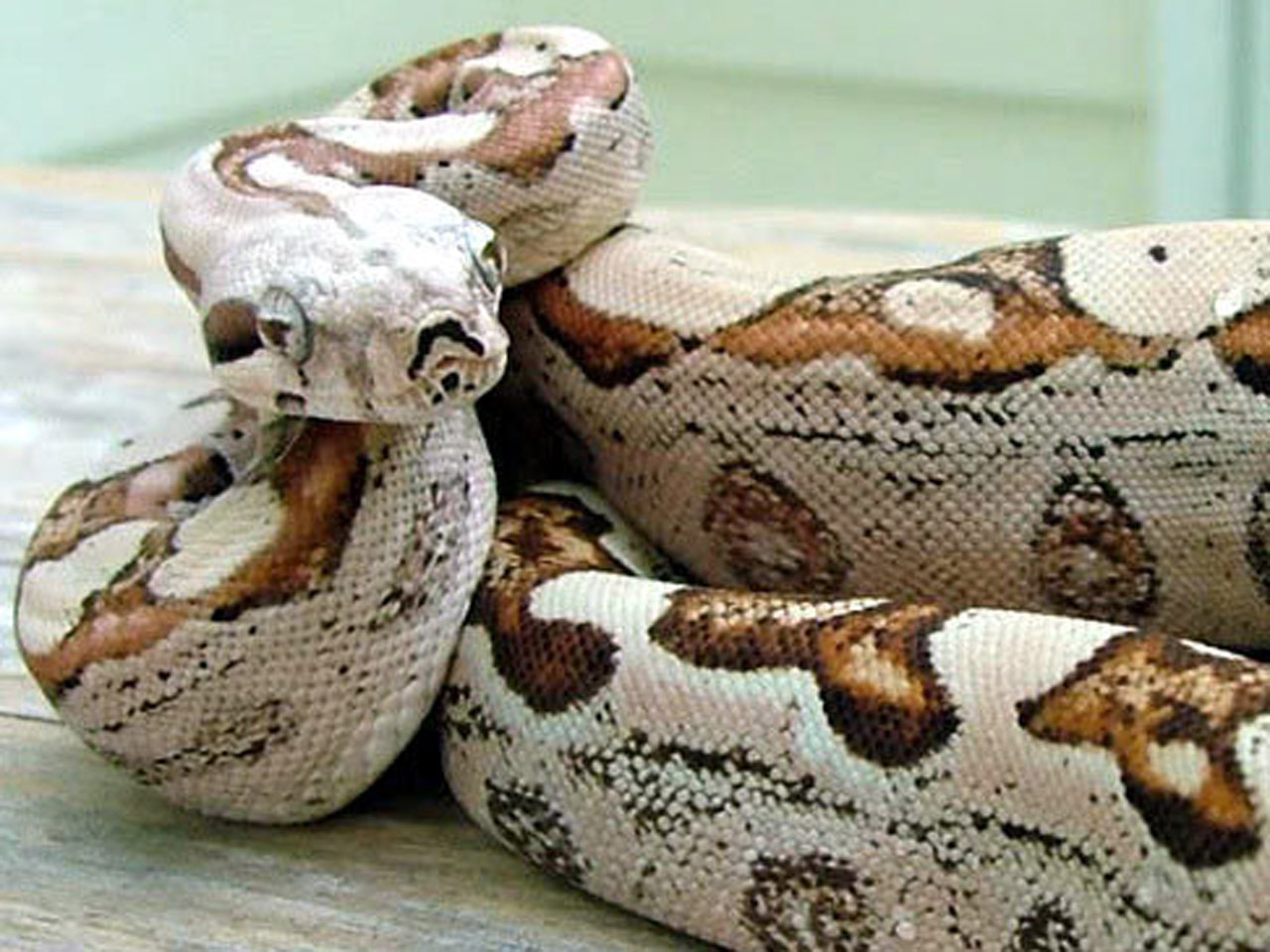

When pressure was applied to the cuff a third of the length down the body, the snakes responded by activating the ribs further back to breathe. "We found multiple lines of evidence in support of our hypothesis that boa constrictors actively modulate the trunk segments and ribs used for lung ventilation, in response to hindered rib motions," the authors wrote. He found that there were no nerve signals in the constricted muscle at all rather, the snake activated a different set of ribs further down its body to continue breathing. Finally, Boback serendipitously managed to capture one snake mid-meal using a GoPro camera. This was done by recording the nerve signals that controlled the rib muscles as pressure was being applied with the cuffs on one adult female boa and one adult male boa, using a technique called electromyography. (Even humans find the procedure uncomfortable, so one can hardly blame the snakes.) However, the method provided reliable data on pressure variation and volume changes as the snakes breathed in and out, and the biologists visually confirmed that data in the X-ray videos in several cases.Ĭapano's co-authors at Dickinson College, Scott Boback and Charles Zwemer, took on the task of determining whether the snakes were capable of specific patterns of muscle activation. The authors acknowledged that these results were inconsistent, mostly because the snakes kept taking off their masks.

The pressure difference over that fixed resistance yields the flow rate. The snake breaths passed through with a PVC tube containing a fine metal mesh to provide some resistance to the airflow. The team used pneumotachography (often used to study sleep apnea and related disorders in humans) to monitor the airflow in five boa constrictors, fabricating small lightweight masks for the snakes out of plastic bottles. The ribs halfway along the body don't move/contribute to breathing.
#BOA CONSTRICTOR SNAKES MOVIE#
This X-ray movie shows the ribs one-third of the way down the snake's body moving to breathe. The reptiles essentially use the far end of their lungs as a bellows to pull in air whenever the ribs closer to the head are obstructed. Boa constrictors, they discovered, have a remarkable ability to selectively use different sections of their rib cage for breathing during constriction.
#BOA CONSTRICTOR SNAKES SERIES#
They rely entirely on the motion of their ribs to breathe.īiologists at Brown University and Dickinson College conducted a series of experiments to find out more, and they described their results in a new paper published in the Journal of Experimental Biology. Regardless of what's on the menu, how do the snakes still manage to breathe as they crush an animal to death, since that constriction also uncomfortably squeezes the boas' own ribs? Unlike mammals (including humans), boa constrictors don’t have a separate diaphragm. They have also been known to chow down on even larger prey, including monkeys, wild pigs, and ocelots. The boa uses its muscles to move its prey down the length of its body to the stomach, where the unlucky varmint is digested over the next four to six days.īoa constrictors mostly consume various medium-sized rodents, lizards, and birds. Then the boa unhinges its jaw and swallows the prey whole. The constrictor cuts off blood flow to the heart and brain. First, the snake strikes and latches onto the prey with its teeth, then it coils its body tightly around the poor creature and slowly squeezes the life from it. Watching a boa constrictor capture and consume its prey is quite something.


 0 kommentar(er)
0 kommentar(er)
